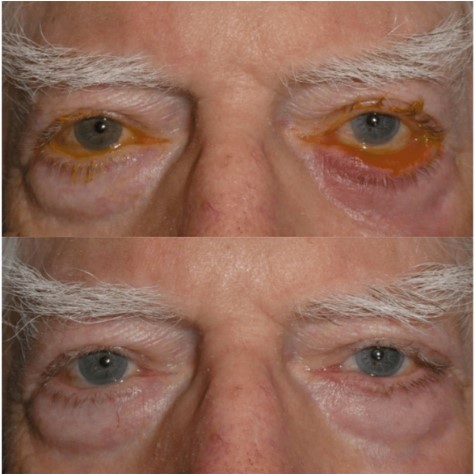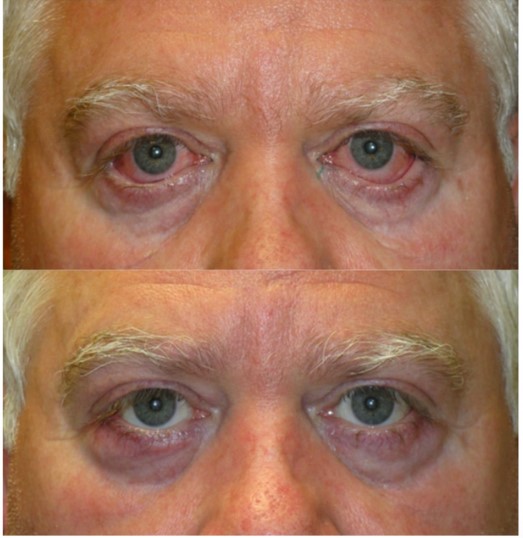Out-turned Eyelid Repair (Ectropion)
What is an Ectropion?
An ectropion, also known as an out-turned eyelid, is a condition where the eyelid rolls outward or pulls downward. This is most commonly caused by the eyelid stretching out with age, but can also be due to trauma, scarring, previous surgery, paralysis, or nerve damage.
Ectropion is a condition that, if left untreated, will typically get worse over time. When the eyelid sags and rolls outward, parts of the eyelid and eye that are normally wet get dried out, red, and irritated. Ectropion may also prevent the eyelids from closing properly. This leads to tear evaporation and damage to the eye.
What is the Treatment for an Ectropion Like?
The treatment for an ectropion varies depending on the severity and the patient’s symptoms. If ectropion is mild, irritation and dryness can often be managed with artificial tears and/or ointments that work to lubricate the eye.
For more significant ectropion, lubrication is typically not sufficient and surgery will be necessary. The type of surgery needed for ectropion depends on the cause of the condition. For ectropion that is caused by aging, your surgeon may recommend tightening the lower eyelid. If the ectropion is due to a shortage of lower eyelid skin pulling the eyelid downward, the surgical method used to fix an ectropion is a skin graft or midface lift. Your surgeon may use a skin graft taken from the upper eyelid or behind the ear to fix your condition.
Surgery to treat ectropion can usually be performed in an outpatient setting with local anesthesia or sedation. After surgery, you will generally use an antibiotic ointment for approximately a week. While the eyelid may feel tight and sore immediately after surgery, many patients also experience an immediate resolution of the problem after surgery is completed.
When Should I Consider Undergoing Treatment for an Ectropion?
The eyelids normally protect the eyeball from air and debris. However, when the eyelid is pulled outward or downward, the eye is exposed to air and becomes dry. Corneal dryness and damage/irritation can lead to more serious conditions such as eye infections, corneal abrasions, and/or corneal ulcers. You should consider evaluation for treatment of ectropion if:
- Your eyelid is visibly turned outwards
- You experience redness, eye irritation or pain on a daily basis
- Mucous is being discharged from your eye(s)
If you experience any of these aforementioned issues, consider contacting us to set up a consultation with one of our board-certified oculofacial plastic surgeons.
For more information on post-operative care, click here. The content on this page is generalized information and is not medical advice. You will receive your own customized instructions from our providers.

Dr. Nicole Langelier

